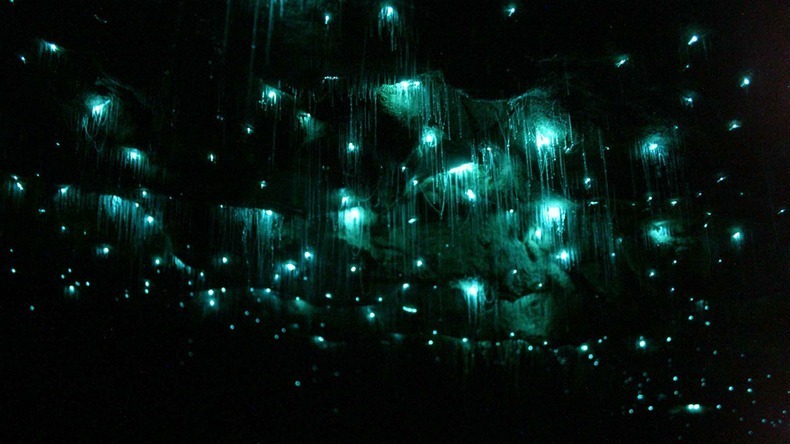Waitomo Glowworm Caves, New Zealand
-
The Waitomo Glowworm Caves, located just outside the main Waitomo township on the North Island of New Zealand, is a famous attraction because of a sizeable population of glowworms that live in the caves. Glowworms or Arachnocampa luminosa are tiny, bioluminescent creatures that produce a blue-green light and are found exclusively in New Zealand.
The Waitomo Glowworm Caves were first explored in 1887 by local Maori Chief Tane Tinorau accompanied by an English surveyor Fred Mace. Local Maori people knew of the Caves existence, but the subterranean caverns had never been extensively explored until Fred and Tane went to investigate. They built a raft of flax stems and with candles in hand, floated into the cave where the stream goes underground.
As they entered the caves, they came across the Glowworm Grotto and were amazed by the twinkling glow coming from the ceiling. As they travelled further into the cave by poling themselves towards an embankment, they were also astounded by the limestone formations.

Jubilant at their discovery, they returned many times to explore further, and on one independent trip, Chief Tane discovered the upper level entrance to the cave, which is now the current entrance. By 1889 Tane Tinorau had opened the cave to tourists. Tane Tinorau and his wife Huti, started leading groups through the cave for a small fee. In 1906 the administration of the cave was taken over by the government. They now receive a percentage of the cave’s revenue and are involved in the management and development of the cave.


